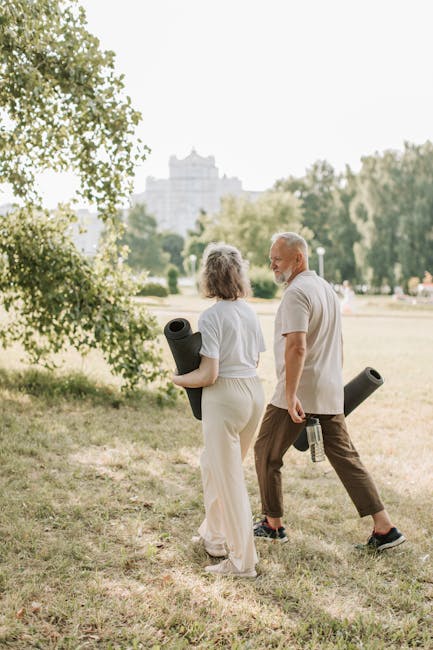
Want to Live a Longer, Healthier, More Vibrant Life? Science Points to Two Simple Activities.
In the endless search for the fountain of youth, we often overlook the most powerful tools already at our disposal. Forget expensive fads and complicated regimens. The scientifically-backed secret to increasing your healthspan—the years you live in good health—is a powerful combination: walking and strength training. These aren’t just exercises; they are fundamental investments in your future self. Together, they form a synergistic duo that protects your heart, fortifies your bones, and sharpens your mind. Here’s why this combination is non-negotiable for longevity and how you can easily build a routine that sticks.
The Power of Walking: Your Foundation for a Long Life
Walking is humanity’s most primal form of exercise, and its benefits are profound. It’s more than just a way to get from A to B; it’s a low-impact, accessible medicine for the body and mind.
- Cardiovascular Champion: Regular brisk walking lowers blood pressure, reduces the risk of stroke, and improves cholesterol levels. It’s a gentle yet effective way to keep your heart—the engine of your body—running smoothly.
- Joint-Friendly Movement: Unlike high-impact exercises, walking lubricates your joints and strengthens the supporting muscles without causing excessive strain, making it ideal for all ages.
- Mental Clarity and Mood Boost: A daily walk, especially outdoors, has been proven to reduce stress, combat symptoms of depression, and improve cognitive function. It’s a moving meditation that costs nothing.
The Might of Strength Training: Your Body’s Armor Against Aging
If walking is the foundation, strength training is the essential framework that keeps your body strong and resilient. As we age, we naturally lose muscle mass and bone density (a process called sarcopenia and osteoporosis), which can lead to frailty and injury. Strength training is the single most effective way to fight this decline.
- Builds and Maintains Muscle: Preserving muscle mass is crucial for a healthy metabolism, stable blood sugar, and a strong physique. More muscle means your body burns more calories at rest.
- Fortifies Your Skeleton: Resistance training puts stress on your bones, signaling them to become denser and stronger. This is your best defense against fractures and osteoporosis.
- Enhances Functional Strength: This is about real-world strength—the ability to carry heavy groceries, lift your luggage into the overhead bin, or get up from the floor with ease. It’s the key to maintaining independence as you age.
How to Build Your Longevity Workout Routine: A Simple Weekly Plan
The goal is consistency, not intensity. You don’t need to become a bodybuilder or a marathon runner. You just need to move with purpose. Here’s a simple, effective template to get you started.
Step 1: The Walking Plan
Aim for 150 minutes of moderate-intensity walking per week. This breaks down to just 30 minutes, 5 days a week.
- Getting Started: If you’re new to exercise, start with 10-15 minute walks and gradually increase the duration.
- Find Your Pace: A “brisk” or “moderate” pace means you can still hold a conversation, but you’re slightly out of breath.
- Mix It Up: Incorporate small hills or intervals of faster walking to challenge your heart and lungs.
Step 2: The Strength Training Plan
Aim for 2-3 non-consecutive days of full-body strength training per week.
- Focus on Major Muscle Groups: Your routine should include exercises for your legs, back, chest, shoulders, and core.
- Example Bodyweight Routine (Perfect for Beginners):
- Squats: 10-15 reps (as if sitting in a chair)
- Push-ups: 5-10 reps (on knees or against a wall to start)
- Glute Bridges: 10-15 reps (lying on your back, lift your hips)
- Plank: Hold for 20-30 seconds
Complete 2-3 rounds of this circuit.
A Sample Longevity Week:
This is a guide. Listen to your body and adjust as needed!
- Monday: Strength Training (Full Body)
- Tuesday: Brisk Walk (30 minutes)
- Wednesday: Strength Training (Full Body)
- Thursday: Brisk Walk (30 minutes)
- Friday: Longer, leisurely walk or active recovery like stretching (45-60 minutes)
- Saturday: Active Rest (gardening, light yoga) or a short walk
- Sunday: Rest
Embracing walking and strength training isn’t about chasing eternal youth; it’s about investing in a future where you are strong, capable, and full of life. Start small, stay consistent, and your future self will thank you for every step taken and every weight lifted.
